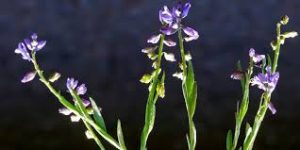Our Blog
Home / Blog
Conservation Of Medicinal Plants : A Botanist Approach

By Dr. Mrs. Phalguni Bhattacharyya (Asst. Professor, Department Of Botany, Malda College) & Dr. Amitava Ghosh (Asst. Professor, Department Of Botany, Asutosh College)
Plants are unique creature by the nature. It forms the dominant features of the landscape. They share the major portion of global ecosystem. The number of species is 270000 to 300000 among which 235000 species are flowering plants. Plants are autophytes. They have the photosynthesis system . Plants including marine and terrestrial ecosystem are the primary producer of this planet because of photosynthesis.
They have the power of harvesting light energy from the sun and can fix carbon from the atmosphere into organic molecules. They release oxygen to the atmosphere. Along with their growth life is sustained in this planet. Photosynthetic organism fix 100 billion metric tons of carbon annually. Plants have medicinal values too. Many active bio molecules against pathological units are extracted from plants.
The pressure of extinction due to congress of human civilization towards the so called progress is slowly disintegrating the diversity of occurrence of these plants. Among the flowering plant species only 3000 are mainly utilizes as food source by the human society. Many plant species which are enlisted as weeds or unwanted disturbing plants for the development of food crops of high demand produces active molecules of medicinal values. Examples of such plants are as follows.
Achyranthes aspera, Aloe barbadensis , Argemone mexicana, Andrographis paniculata , Asparagus racemosus, Bacopa monnieri , Bambusa tulda, Calotropis gigantia, Capsicum chinensis, Carica papaya, Cassia alata, Centella asiatica , Clitoria turnatea, Costus speciosus, Croton caudatus, Datura innoxia Dioscorea alata, Eclipta alba, Euphorbia hirta, Gloriosa superba, Heliotropium indicum, Holarrhena antidysentrica , Hygrophyla spinosa, Jatropha curcus , Leonurus sibiricus, Leucus cephaloites , Mangifera indica , Mimosa pudica , Ocimum sanctum, Phyllanthus fraternus , Physalis minima, piper longum , Rauvolfia serpentina, Scoparia dulcis, Solanum indicum, Solanum sisymbrifolium, Strychnos nuxvomica, Tinospora cordifolia, Urena lobata, Vernonia cinerea, Vanda roxburghii, Wedelia chinensis, Withania somnifera ; one can add more names to the list. They are the worst sufferer of the increasing urbanization.
City development encroaches the natural habitat of these plants. Extraction and purification of active bio – molecules are needed because of their medicinal , anti oxidative , antimicrobial , anti – pollutants role. Conservation practices are applied as ex – situ in the form restricted garden or in – situ in the process of conserving germplasm. UGC promoted NAAC evaluation of the academic institutions of the states encourages ex – situ conservation of the medicinal plants in the garden. Green house concept is also applied for promoting seedlings of these plants. Several important research stations of food crops also conserve germplasm of the rare old species of food crops that are endangered.
On the other hand there are plants which compete with the essential food crops for nourishment often beats the later in this process. Ironically waste water , a mixture of noxious pollutants , often heavy metals is the source of irrigation in most areas. To some concentration they exhibit high growth rate but bioaccumulation of the metals due to waste pollutants seriously disturbing the ecosystem as well as the food chain and simultaneously appears toxic to the Homo sapiens. The degree of pollution is readily sensed by these plants. The biological and physiological character changes to form the plants which are inert for the sustenance of the ecosystem. These plants are also invasive often destroy the ecological bonding of the prevalent species. Conservation is the need to protect eco – friendly plants. The healthy clean atmosphere is the demand. So conservation is important to protect natural flora which supports healthy life. Recently IUCN records the higher rate of plant species extinction which is a real threat for the survival of humanity in near future and this type of extinction actually speaks off the loss of genetic line of one resource which is dangerous. If parental stock of genetic uniqueness disappears then any setback in the structure of the resources will create irreparable problems. So a well planned and coordinated law bound effort on behalf of the Government , non – government and science sectors should start an immediate assessment of all the biological and genetic natural resources at the regional and up to the national level.
In this context the Biological Diversity Act for India controls access to all genetic resources of the country and includes provision for equitable profit sharing. The detailed specific rules are available on the webpage of the Ministry of Environment and Forests, Government of India, and the National Biodiversity Authority, a statutory and regulatory body established under Biological Diversity act , 2002 (www.nbaindia.org). To protect plants considered as bio – power a list should be prepared with food crops , forest plantation species , economically important medicinal plants with their detailed morphological , biochemical and physiological database. Here increases the role of a botanist who can multiply the urgency of selection understanding the reasons for a particular plant becoming endangered. It is only by his / her documentation through identification and characterization , taxonomical and ecological study which may find its way of solution through ex – situ and in – situ conservation , creating natural habitat for population of threatened species. A botanist also evaluate the commercial scope for the utility of the plant species and above all compilation of molecular database for future assortment of characters and easy identification. It is the knowledge of a botanist with the assistance of modern instrumentation and methodologies which supports and modulate the conservation policies. Small Endeavour of habitat management and manipulation of techniques rare plants with immense potentiality as a medicinal plant can be conserved.









